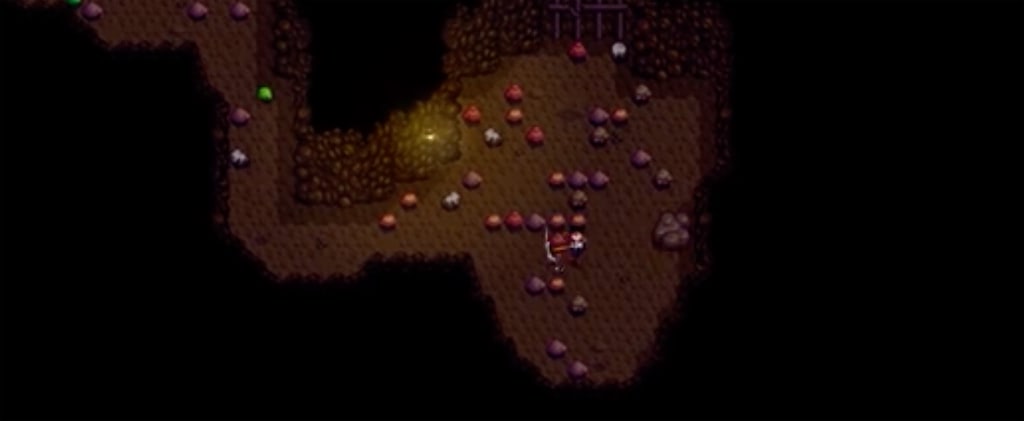Hello, fellow Stardew Valley enthusiasts! A common question among players is which tools to upgrade first and in what order. Although there is no one-size-fits-all answer, I will share my own personal upgrade sequence along with the reasoning behind it. Hopefully, this will serve as a useful reference for you.
Initial Tools and Upgrade Priorities
At the beginning of the game, players start with a Hoe, Watering Can, Scythe, Axe, and Pickaxe. Since the Scythe cannot be upgraded, we will not discuss it here. After reaching Spring 5, you can start mining. Typically, I use a regular Pickaxe to mine until reaching level 40, gathering Copper and Iron Bars. From there, I focus on crafting Furnaces, Tappers, and Basic Sprinklers. When fishing, I start upgrading the Pickaxe because it directly affects mining efficiency, energy consumption, and time. Upgrading your Pickaxe and Glass Fishing Rod are important early game priorities, as mining and fishing are the most efficient activities in the beginning.
If resources are abundant, I will upgrade the Pickaxe to a Steel Pickaxe (two levels). This allows for mining all the way to level 120. After reaching level 80, if I have extra money, I may consider upgrading to a Gold Pickaxe. Next up is the Axe.

Upgrading the Axe
In the early game, a regular Axe combined with Foraging can quickly increase your Foraging level to 3, unlocking the Tapper. After that, I stop chopping trees until I have enough money to upgrade the Axe. Usually, by the end of Spring, I upgrade the Axe to Gold (or even Iridium if available). In most cases, I only upgrade the Axe to Iridium, as other tools do not need it. Since leveling Foraging to 10 by chopping trees takes a long time, upgrading the Axe is worthwhile.
After upgrading the Axe, focus on chopping trees to raise your Foraging level to 6, unlocking the Lightning Rod. In the summer, when thunderstorms arrive, this will allow you to collect batteries without delay. Continue chopping trees and aim to reach Foraging level 10 as soon as possible. The mid-game also demands a lot of wood for various buildings and Kegs.
Watering Can and Hoe Upgrades
I tend not to upgrade the Watering Can early in the game, as I usually build Basic Sprinklers. This helps save money. However, if you manually water many crops, an upgraded Watering Can will significantly improve efficiency. The Watering Can must be upgraded eventually because it is needed on Ginger Island. I usually upgrade it twice to a Steel Watering Can, which has a 5-tile range, before Ginger Island becomes accessible.
As for the Hoe, I never upgrade it. Early in the game, there is no need, and once Ginger Island is unlocked, there is no need to cultivate land at home. Ginger Island soil can be tilled using Bombs, and the Hoe is only needed for patching up any holes. After that, the Hoe is mostly used for digging up Artifact Spots.
Trash Can Upgrades
I never upgrade the Trash Can, as items thrown away are usually not valuable. Spending 20,000 gold and several bars on an upgrade may not be worth it, especially when money is not a concern later in the game.
In summary, I typically do not upgrade Iridium tools, which saves a lot of Iridium Bars. If you choose not to upgrade, you can save enough Iridium Bars for 20 Iridium Sprinklers. Of course, if you have plenty of money later in the game, feel free to upgrade tools based on your personal preferences.
To recap, the priority for tool upgrades in the early game is as follows:
- Upgrade the Pickaxe to a high priority, typically two levels in succession.
- Upgrade the Watering Can based on your needs.
- Upgrade the Axe up to the Gold Axe.
- Upgrade the Watering Can to a Steel Watering Can before unlocking Ginger Island.
- Hoe and Trash Can upgrades have no priority.
By following this guide, you can efficiently upgrade your tools in Stardew Valley, maximizing your productivity and resource management throughout the game. Remember that each player’s experience is unique, and you may need to adjust the upgrade priorities based on your playstyle and in-game circumstances. Happy farming!
